Photos/video: Stacy Young.
Eureka High performing arts students got to perform arts in front of people recently with some COVID-compliant in-person theater and music productions. Performing for sparse — but surely eager — audiences, students tugged on friends and families’ hearts with a charming rendition of “You’re a Good Man, Charlie Brown” late last month and dazzled concert-goers with jazz, symphonic band, orchestra, choir and a cappella performances last week.
“It was just exhilarating to be on the stage again,” Isaac Young, a sophomore, actor and singer at Eureka High told the Outpost. He starred as Charlie Brown and Linus in the musical (it was a split cast production), and sang tenor for Limited Edition, Eureka High’s a cappella group, at the concert. “It was really just nice to be up there again, after not being there for over a year.”
Getting there wasn’t easy. Learning to sing or play an instrument remotely, for instance, is a huge challenge, Charles Young, Eureka High music director, told the Outpost, not to mention the obstacles some kids face practicing in a house full of family members during school and business hours. For Limited Edition, singers had to listen to recordings and practice on their own during distance learning, Isaac said.
Teaching theater remotely was challenging, but possible, said Nan Voss, the theater director at Eureka High. Students focused on things like character voices or facial expression this year rather than physicality and spatial relationships. “Some of my students really blossomed as actors, and tackled roles that they may not have done in person,” Voss said. “I think for some of them being alone in their own rooms helped them to not be afraid of expressing themselves.”
When Eureka High’s campus opened in March, returning to the auditorium wasn’t as simple as returning to the classroom, because singing, as well as mouthpiece instruments, obviously require projection. For safety reasons, some Eureka High music students gathered to learn percussion rather than their usual instruments for a while after returning to campus.
“There was this one jam session where I taught them a simple four-beat pattern on a percussion instrument. And it was a cacophony of sound,” Young said. “They’re looking at me like, ‘Can we do it again?’ And I said, ‘Well, yeah, let’s go again, but this time I really need you to beat up the drums. If you’re gonna break my drum head, then you better make it worth it.’ It was so loud. It was so loud, but it was joy.”
Once it was deemed safe, student musicians resumed a kind of regular routine by practicing their familiar instruments before school, outdoors and socially distanced. But only a fraction of each ensemble was present for these rehearsals because the school alphabetically splits its student body into stable groups to mitigate COVID danger, which impacted instrument ratios. “Strangely enough, all my trumpets were in the last half of the alphabet. So I’d have a whole lot of trumpets, flutes, but no clarinets,” Young said.
Finally performing for an audience came with a fresh set of complications. The 750-seat auditorium was limited to about 100 people, and the shows developed complicated sign-in and seating protocols for their guests. “Even though the audience was masked and socially-distanced, it felt a little scary and worrying; I just did not want my little show to become a ‘super-spreader’ event,” Voss said. “All of our safety precautions paid off though; cast and audience remained healthy throughout the run.”
A week later, the music department hosted a few back-to-back concerts in a single evening.
“In order to pull that off, we had to make sure that we had the audience in there for a certain amount of time, we had to open up the doors, fog the place [with a machine] to knock down the COVID, and then we could reload with another audience,” Young said. “Oh my goodness gracious.”
To avoid wearing masks, actors in the musical took rapid tests before their final rehearsals and the actual show. “We were all overjoyed the first day we got to rehearse and actually see each other’s faces. It was emotional, overwhelming, and so necessary. All of our muscles relaxed a little and there was so much smiling,” Voss said.
Student musicians and singers weren’t able to rapid-test for their performances. “[Singers] got these special masks that look like a platypus face so we’re able to enunciate better and articulate and be heard more,” Isaac said. “But singing with a mask is just hard in general.” The musicians and their instruments had to wear masks that cover their bells (the part of mouthpiece instruments where the breath-infested music comes out).
But even shielded by their masks, Young said that the students’ happiness to play music together and perform for a live audience was obvious. “The sense of community and the sense of joy on my students’ faces — of actually having an audience in the room to applaud — was palpable. You can feel it in the room, the sense of relief,” he said.
“It was really nice to get to play with such a large group of people again. We sounded like a real band. It was really exciting,” Kyra Dart, a senior and symphonic band drum major, said. “It was a little bit chaotic. But I think that that was just because we haven’t done that in over a year now.”
The very small audience was special, in a way. “I wasn’t super nervous about the audience, because COVID protocols require you to only have a couple guests. So the people who are coming to watch the show are people who love us,” Kyra said. “I actually heard a couple people say they got a little emotional hearing us play together in person for the first time in so long.”
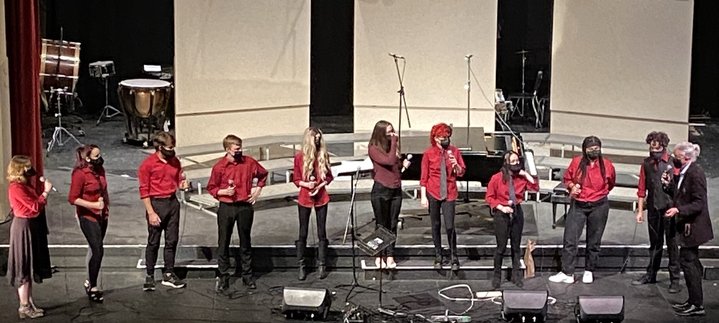
Limited Edition vocal group.
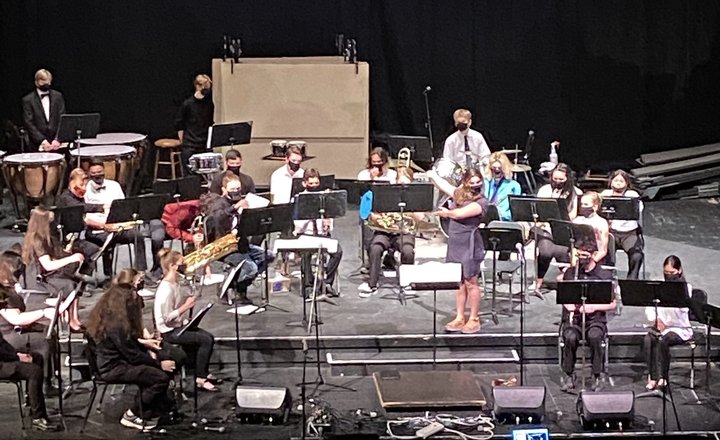
Symphonic band.
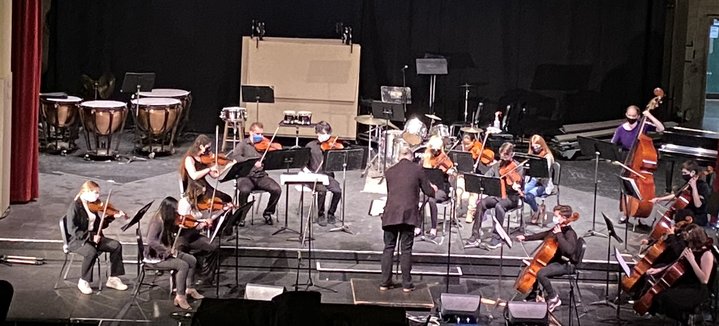
Orchestra.
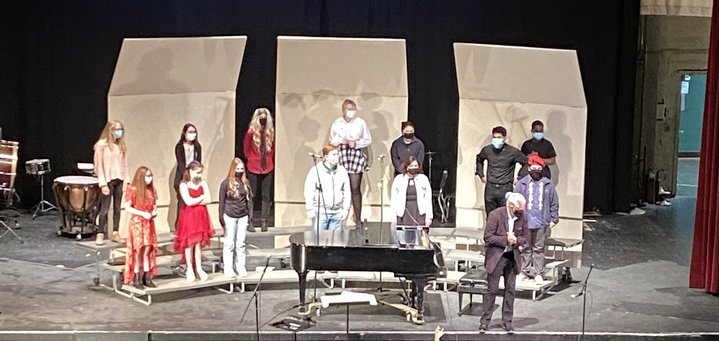
Concert choir.
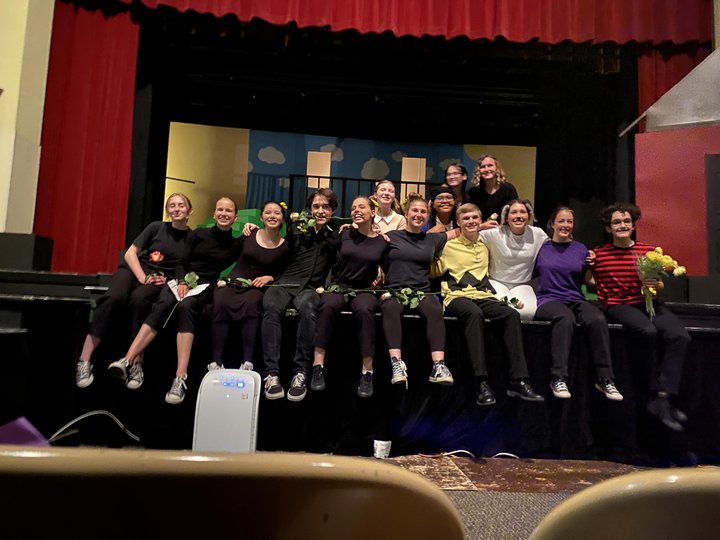
The cast of You’re a Good Man, Charlie Brown.
CLICK TO MANAGE